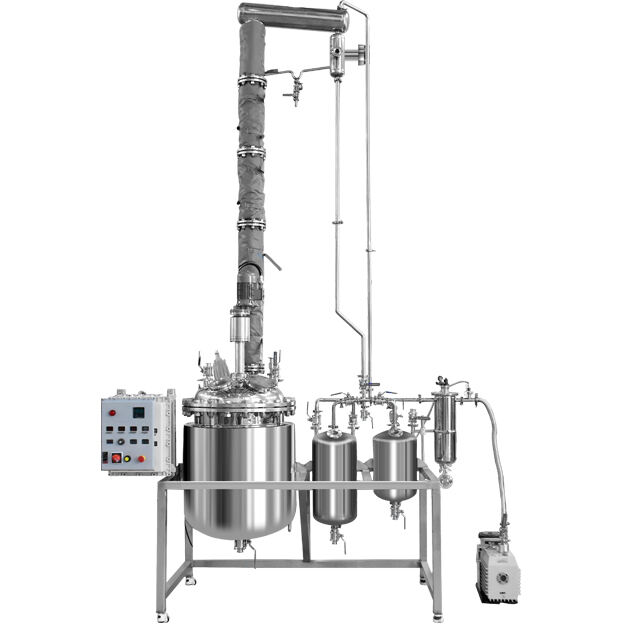Understanding the Power of Advanced Liquid Separation Technology
Fractional distillation stands as one of the most significant achievements in chemical separation technology, revolutionizing how industries purify and separate volatile liquid mixtures. This sophisticated process has become the backbone of numerous industrial applications, from petroleum refinement to the production of essential chemicals and even the creation of alcoholic beverages. By leveraging temperature differences and vapor pressure principles, fractional distillation achieves separation levels that far surpass traditional distillation methods.
The impact of this separation technique extends far beyond laboratory settings, playing a crucial role in modern manufacturing and chemical processing. As industries continue to demand higher purity standards and more efficient separation processes, understanding and optimizing fractional distillation becomes increasingly important for chemical engineers and process designers.

The Science Behind Fractional Distillation
Fundamental Principles and Mechanisms
At its core, fractional distillation relies on the principle that different compounds have distinct boiling points. When a mixture is heated, components with lower boiling points vaporize first, while those with higher boiling points remain liquid longer. The process utilizes a fractionating column, filled with packing material or plates, which provides extensive surface area for vapor-liquid contact and repeated condensation-evaporation cycles.
The column's design allows for multiple theoretical plates, each representing a mini-distillation stage. As vapors rise through the column, they encounter progressively cooler temperatures, leading to selective condensation. This repeated process results in increasingly pure fractions of the original mixture components.
Temperature Control and Vapor Pressure Dynamics
Precise temperature control throughout the fractional distillation process is crucial for achieving optimal separation. The temperature gradient along the column height must be carefully maintained to ensure proper separation of components with similar boiling points. Modern systems employ sophisticated temperature monitoring and control systems to maintain these precise conditions throughout the operation.
Vapor pressure plays a fundamental role in the separation process. Components with higher vapor pressures at a given temperature will preferentially vaporize, allowing for their separation from components with lower vapor pressures. Understanding these relationships helps optimize column design and operating parameters.
Enhanced Separation Efficiency Through Column Design
Advanced Packing Materials and Their Impact
The choice of packing material significantly influences fractional distillation efficiency. Modern columns utilize specialized materials such as structured packing, random packing, or sophisticated plate designs. These materials maximize surface area for vapor-liquid contact while minimizing pressure drop through the column.
Recent innovations in packing material design have led to improved separation efficiency and reduced energy consumption. High-performance materials combining optimal surface area with minimal resistance to flow have revolutionized the capabilities of fractional distillation systems.
Column Configuration Optimization
The physical configuration of the distillation column directly impacts separation effectiveness. Factors such as column diameter, height, and internal structure must be carefully balanced to achieve optimal performance. Modern design approaches incorporate computational fluid dynamics and mass transfer models to optimize these parameters.
Engineers now have access to sophisticated simulation tools that help predict column behavior and optimize design parameters before construction. This capability has led to more efficient and cost-effective fractional distillation systems across various industries.
Industrial Applications and Benefits
Petroleum Industry Implementation
The petroleum industry represents one of the largest applications of fractional distillation, where crude oil is separated into various valuable products. Modern refineries employ multiple fractional distillation columns operating in series to produce gasoline, diesel fuel, kerosene, and other petroleum products with exceptional purity.
Advanced control systems and optimization algorithms ensure these facilities maintain peak efficiency while adapting to varying feedstock compositions and product demands. The economic impact of improved fractional distillation efficiency in this sector alone justifies continued investment in technology advancement.
Chemical and Pharmaceutical Processing
In chemical and pharmaceutical manufacturing, fractional distillation enables the production of high-purity compounds essential for various applications. The ability to achieve precise separation of complex mixtures has made this technology indispensable in producing pharmaceutical-grade solvents and chemical intermediates.
Recent advances in fractional distillation technology have enabled the processing of heat-sensitive compounds and the separation of mixtures with very close boiling points, expanding its utility in these demanding industries.
Future Developments and Sustainability
Energy Efficiency Innovations
The push for sustainability has driven significant innovations in energy-efficient fractional distillation systems. Heat integration, advanced control strategies, and novel column designs are reducing energy consumption while maintaining or improving separation efficiency. These developments are particularly important given the energy-intensive nature of traditional distillation processes.
Emerging technologies such as dividing wall columns and heat pump-assisted distillation represent promising approaches to further reduce energy consumption and operating costs. These innovations demonstrate the continuing evolution of fractional distillation technology.
Environmental Impact Considerations
Modern fractional distillation systems increasingly incorporate features to minimize environmental impact. This includes improved vapor recovery systems, reduced emissions designs, and integration with sustainable energy sources. The development of more environmentally friendly separation processes remains a key focus area for research and development.
Industry leaders are also exploring hybrid separation technologies that combine fractional distillation with other separation methods to achieve better efficiency and reduced environmental impact. These developments promise to ensure the continued relevance of fractional distillation in a sustainability-focused future.
Frequently Asked Questions
What makes fractional distillation more effective than simple distillation?
Fractional distillation achieves superior separation through its use of a fractionating column, which provides multiple theoretical plates for vapor-liquid contact. This allows for repeated condensation and vaporization cycles, resulting in much higher purity products compared to simple distillation.
How does column height affect separation efficiency?
Column height directly correlates with separation efficiency by providing more theoretical plates for separation. Taller columns allow for more vapor-liquid contact opportunities, resulting in better separation of components with similar boiling points, though there are practical and economic limits to consider.
What are the key maintenance requirements for fractional distillation systems?
Regular maintenance of fractional distillation systems includes inspection and cleaning of column packing or plates, verification of temperature and pressure monitoring systems, checking for wear or damage to seals and gaskets, and ensuring proper function of condensers and reboilers. Preventive maintenance schedules are crucial for optimal system performance.
